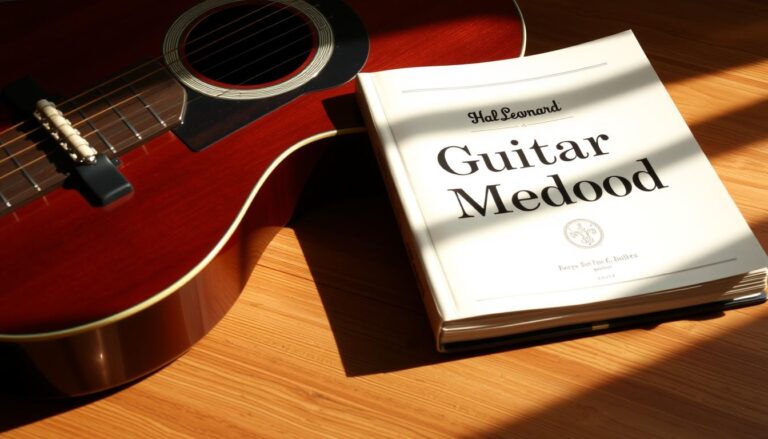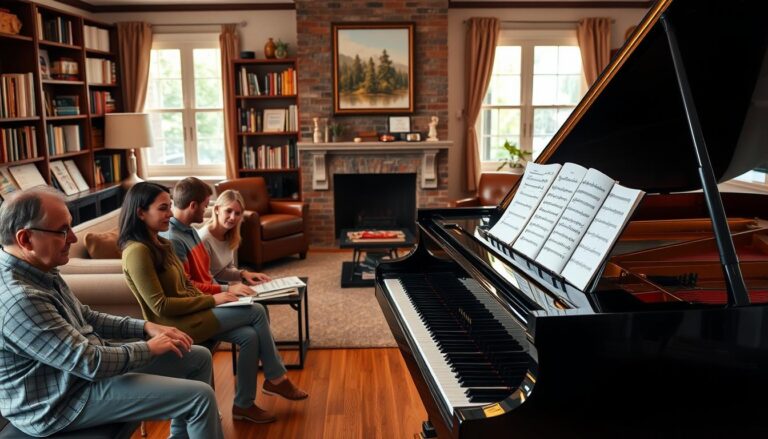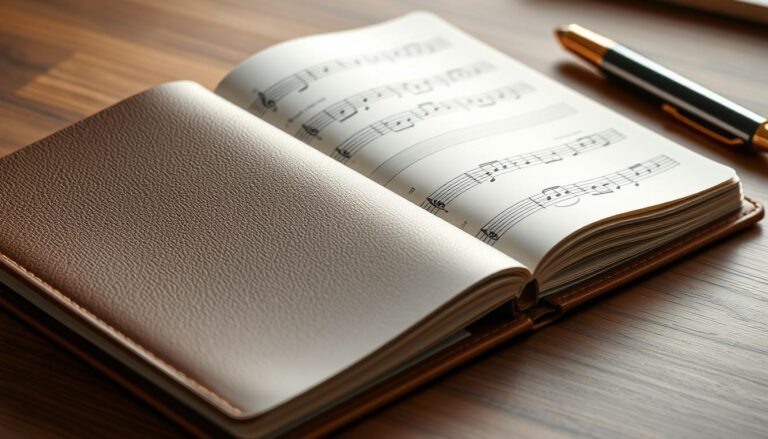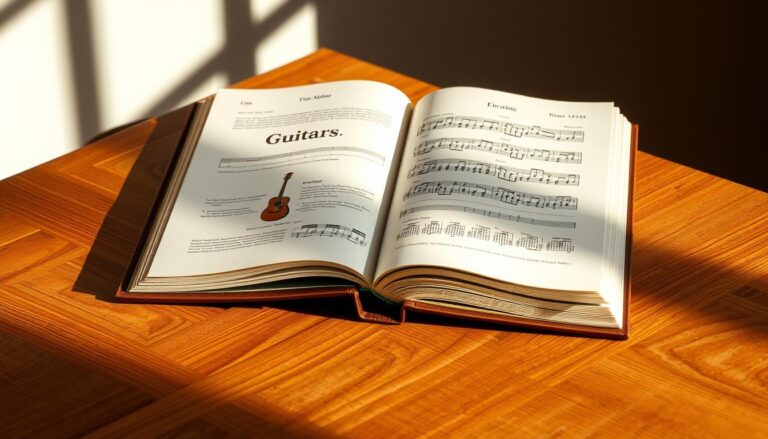Top Rated Best Beginner Piano Book Options
This overview presents a market-focused evaluation of entry-level method options for learners and purchasers in the United States. It segments offerings by age and pacing so teachers and parents can align a first piano purchase with motor control, attention span, and literacy goals.
Discussion highlights include verified features from leading series: off-staff pre-reading for very young learners, gradual staff introduction for early elementary, and accelerated curricula for older students and adults. The summary notes finger numbers, black-key grouping, early note values, and clear page layout as selection criteria teachers use.
The guide also differentiates adult-focused method books by depth of theory, improvisation elements, and assessment integration. It previews how multimedia support and publisher availability affect procurement and at-home adherence.
Key Takeaways
- Age and pacing determine the ideal series path for effective skill progression.
- Very young learners benefit from off-staff reading and black-key focus.
- Clear page layout and stepwise staff introduction improve retention.
- Adult methods vary by theory depth and improvisation features.
- Multimedia backing tracks and apps increase practice consistency.
- The guide supports practical procurement decisions via publisher and Amazon availability.
Buyer’s guide overview: how to choose the first piano method book today
Selecting a first method requires aligning age, motor skills, and lesson pacing to the learner’s goals. This section presents a concise decision framework for teachers, parents, and procurement teams in the United States.
Primary factors include age, attention span, hand size, and the target outcome—whether the focus is staff reading, chord literacy, or improvisation.
Key factors: age, attention span, hand size, and goals
Two entry paths dominate reported practice: immediate on-staff reading or a pre-reading route that emphasizes finger numbers and black-key groups. For ages 3–6, off-staff materials reduce cognitive load and build confidence.
Around age 7, a one-note-at-a-time staff approach improves retention. Older students tolerate accelerated sequences that introduce eighth notes, sharps/flats, and hands-together earlier in the lesson plan.
What teachers prioritize: learning finger numbers, black keys groups, and early note values
Teachers rank these priorities: learning finger numbers early, recognizing two- and three-black-key groupings, internalizing basic note values, and preserving ergonomic hand position.
| Age group | Notation approach | Teacher priority | Pacing / series |
|---|---|---|---|
| 3–6 years | Off-staff, black-key focus | Finger numbers, key geography | Slow; method book series with simple steps |
| ~7 years | Gradual on-staff, one note at a time | Reading accuracy, note values | Moderate; clear page layout |
| Older kids/teens | Accelerated on-staff with rhythms | Hands-together, sharps/flats | Faster; series three levels mapping time |
- Decision framework: match age and attention to pacing and notation approach.
- Material features: assess page clarity, font size, and written theory between lessons.
- Practical tip: bring multiple books to a first lesson to test the student’s way of responding.
Best beginner piano book
This concise selection maps proven method series to age and learning style for rapid course alignment. It highlights off-staff starters for preschoolers, gradual staff introduction for early elementary, accelerated curricula for adolescents, and multimedia adult options.
Quick picks by age and learning style at a glance
Very young (3–6): My First Piano Adventure A–C, Wunderkeys Preschool, and Piano Made Fun Starter prioritize off-staff patterning, finger numbers, and predictable black-key songs.
Elementary (6–8): Piano Adventures Primer and John Thompson’s Easiest Piano Course favor one-note staff steps, reinforced hand position, and worksheet practice.
Older kids/teens: Accelerated Piano Adventures introduces eighth notes, sharps/flats, and early hands-together coordination for faster progression.
“Shortlisting two to three series per student reduces switching and maximizes time-on-task.”
- Ages 3–4: Wunderkeys Preschool — off-staff games and high/low listening.
- Ages 4–6: Piano Made Fun Starter or My First Piano Adventure Book A — black-key focus and finger numbers.
- Ages 5–6 ready for staff: My First Piano Adventure B–C — staff notes and five-finger variety with backing tracks.
- Ages 6–8: Piano Adventures Primer or Thompson Level 1 — clear staff steps and worksheets.
- Older teens/adults: Accelerated series or adult-focused methods with multimedia and chord work.
| Age | Series / Title | Notation approach | Primary advantage |
|---|---|---|---|
| 3–4 | Wunderkeys Preschool | Off-staff | Patterning, game-based learning |
| 4–6 | My First Piano Adventure A / Piano Made Fun Starter | Off-staff → staff | Finger numbers, black-key focus |
| 6–8 | Piano Adventures Primer / Thompson L1 | Gradual staff | One-note steps, hand position |
| Older kids/teens | Accelerated Piano Adventures | Accelerated staff & rhythm | Eighth notes, sharps/flats, hands-together |
Top picks for very young beginners ages 3-6: off-staff starts and playful learning
For children ages 3–6, off-staff methods often begin on black keys and use games to develop motor skills and timing. These approaches lower cognitive load and allow teachers to scaffold reading later.
My First Piano Adventure (A–C): finger numbers and staged staff entry
Book A is fully off-staff on black keys, teaching finger numbers and basic note values with color and backing tracks to support timing.
Books B and C introduce staff notes one step at a time, then skips and changing hand positions. Writing books A–C add short theory and technique tasks often completed in lessons.
Wunderkeys Preschool (1–3): pre-reading rhythm and listening
Wunderkeys is purely pre-reading. It excludes white-key names and finger numbers. The emphasis is on patterns, high/low listening, and very slow pacing with teacher-led games.
Piano Made Fun for the Young (Starter + Note Reading 1–3): predictable units and steady pacing
The Starter focuses on black-key comfort with picture-guided finger use. Note Reading Books introduce notes one at a time using animal names, then expand to C, G, and D/F pentascales.
Practical note: backing tracks and consistent page length stabilize attention and simplify lesson planning for early students.
| Series | Approach | Primary feature | Age focus |
|---|---|---|---|
| My First Piano Adventure A–C | Off-staff → gradual staff | Finger numbers, writing books, backing tracks | 3–6 years |
| Wunderkeys Preschool 1–3 | Pre-reading only | Rhythmic play, high/low listening | 3–4 years |
| Piano Made Fun Starter + Note Reading 1–3 | Black-key start → one-note staff | Animal names, steady unit structure, accompaniment | 3–6 years |
“Starting off-staff and focusing on tactile patterns reduces early reading strain and improves motor mapping on the keyboard.”
Elementary beginners ages 6-8: staff reading, note values, and hand positions
Students ages 6–8 typically shift from pattern play to focused staff work that emphasizes steady hand position and clear rhythmic values.
Piano Adventures Primer (Lesson Book – Primer level) starts with black-key groups and finger numbers, then introduces staff notes one at a time. The lesson book uses clear typography and uncluttered pages to speed lesson time and reduce cognitive load. Repeated cues reinforce ergonomic hand placement across short pieces.
John Thompson’s Easiest Piano Course — Level 1 favors a melody-first staff reading approach. It opens at middle C for each hand and expands notes to five-note ranges per clef. Whole, half, quarter, and dotted half note values appear early, and worksheets teach letter names and beat counting.
- Low-friction reading: Primer supports gradual introduction and hand mechanics.
- Expressive framing: Thompson promotes phrasing and early musicality.
- Teacher choice: select the lesson book that matches time constraints and student goals.
“Both paths suit students who can hold hand position and count steady rhythms across short songs.”
Older kids and teen starters: faster pacing and broader skills
Older students often require a compressed curriculum that advances note reading, rhythm, and key awareness faster than children’s primers. This approach shortens time-to-ensemble readiness while preserving reading accuracy and technical control.
Accelerated Piano Adventures for the older learner
Accelerated Piano Adventures begins with familiar finger numbers and black-key grouping, then moves more rapidly through staff notes and rhythmic subdivision.
Key features:
- Introduces eighth notes early to normalize subdivision counting and rhythmic fluency.
- Presents sharps and flats in practical reading contexts to build accidental familiarity.
- Expands fixed hand positions and position shifts to reduce reliance on a single five-finger pattern.
- Transitions to hands-together playing sooner, improving bilateral coordination within limited lesson time.
“Teachers may use this series as a catch-up path for older students who need efficient progress to school ensembles.”
| Use case | Primary advantage | Deployment |
|---|---|---|
| Late-entry teens | Faster concept throughput with maintained accuracy | Available via publisher and Amazon channels |
| Students targeting ensembles | Early hands-together and accidentals practice | Supplement with targeted technique drills as needed |
| Adults with rapid uptake | Efficient bridge to broader repertoire | Works as an accelerated first piano option |
Practical note: the series keeps core Faber strengths but compresses the timeline. Teachers should monitor hand strength and independence and add technique drills when reading outpaces physical coordination.
Adult beginners: comprehensive methods and multimedia support
Adult learners require curricula that match limited practice time while advancing reading, technique, and harmonic fluency. The following overview compares four widely used adult programs and their media integrations.
Faber Adult Piano Adventures: technique, theory, and play-alongs
Faber Adult is organized into 16 units. Each unit pairs short technique drills with theory quizzes and QR-coded play-alongs. App support reinforces intervals, scales, chord shapes, and posture in paced steps.
Alfred’s Basic Adult All-in-One
Alfred’s All-in-One is comb-bound for flat use. It adds Hanon-style exercises, hand-health guidance, chord progressions, and blues/jazz forms. CD/DVD and digital tracks supply ensemble context for practical harmony work.
Bastien Adult and Hal Leonard Adult
Bastien Adult embeds reviews, quizzes, and challenge pieces to track measurable progress. Frequent assessments make retention visible to a teacher and learner.
Hal Leonard Adult prioritizes keyboard geography and early improvisation. It uses contour-based pre-reading and online orchestral accompaniments to support creative development.
“Selecting a program depends on goals: structured theory, media-backed gradualism, test-driven progression, or creativity-first instruction.”
| Series | Primary focus | Media | Ideal outcome |
|---|---|---|---|
| Faber Adult | Technique + theory balance | QR play-alongs, app | Measured reading and functional harmony |
| Alfred All-in-One | Chord theory, styles | CD/DVD, comb-bound format | Chord-based practical skills |
| Bastien Adult | Assessment-driven progress | Printed quizzes, challenge pieces | Retention and repertoire strength |
| Hal Leonard Adult | Improvisation and pre-reading | Online accompaniments | Creative fluency and keyboard maps |
- Practical note: choose a text that fits weekly practice and lesson objectives.
- Teachers should assign short writing tasks to reinforce note names, rhythm, and chord spelling between lessons.
- Play-alongs improve timing, articulation, and dynamic control across songs.
Method matchmaker: align books with goals, from reading notes on the staff to chords and creativity
Match method features to measurable objectives to avoid retraining and wasted lesson time. Select the curriculum that maps directly to the student’s target—staff fluency, harmonic vocabulary, or improvisation—then confirm pacing and level continuity.
If your priority is reading notes on the staff
Choose materials that introduce notes in clear increments. Piano Adventures Primer uses one-note steps for steady sight‑reading gains. My First Piano Adventure B–C advances to step-and-skip sequences to build interval recognition.
John Thompson Level 1 supports melody-led phrasing and early expressive work for transferable reading skills.
If your priority is chord knowledge and improvisation
Alfred Adult All-in-One emphasizes primary chords and blues forms for applied harmony. Hal Leonard Adult embeds improvisation and contour pre‑reading to develop creative fluency.
Faber Adult suits learners who need lead‑sheet literacy and practical chord application in ensemble settings.
If your priority is clear page design and gradual note values
Piano Adventures Primer offers legible layout and reinforced hand position for low cognitive load.
Piano Made Fun Books 1–3 and Wunderkeys Primer provide predictable unit structure and Middle C stability for early motor control.
“Map learner goals to a series’ structural strengths to prevent misalignment and switching costs.”
Comparison insights: pacing, series length, and supporting materials
Effective procurement compares tempo, level structure, and supplementary assets across method series. This evaluation helps teachers, parents, and program managers align selection with lesson goals and long-term continuity.
Pacing spectrum: slow and steady vs. quicker-moving series
Slowest pacing: Wunderkeys Preschool focuses on off-staff work and black keys with heavy teacher facilitation. It supports ages 3–4 and delays staff reading to reduce cognitive load.
Steady pacing: Piano Made Fun uses a Starter → Note Reading 1–3 path with predictable page layout and animal-note mnemonics. It stops after Book 3, so procurement should account for next steps.
Quicker-moving: My First Piano Adventure advances faster through staff notes, adds Writing Books A–C, technique elements, and bold color pages with quality backing tracks for motivated students.
Series and levels: three-level paths and what comes next
Typical three levels feed into higher curricula. For example, My First A–C commonly transitions into Piano Adventures Level 1.
Wunderkeys Preschool progresses to Wunderkeys Primer 1–3, then to Elementary 1A. Buyers should confirm availability of subsequent levels to avoid mid-year switching.
Extras that matter: writing books, technique, comics, and backing tracks
- Writing support: Faber supplies dedicated writing materials for A–C; some series rely on in-book worksheets or external supplements.
- Technique: Integrated in Faber; suggested practice pages in Wunderkeys; teachers often add targeted drills where gaps appear.
- Engagement and media: Wunderkeys Primer includes comics and games; My First embeds classical themes; multimedia ranges from QR play-alongs (Faber) to CDs/DVDs (Alfred) and orchestral accompaniments (Hal Leonard).
“Procure with continuity in mind: confirm available levels, media format, and writing supports to minimize switching costs.”
| Use case | Pacing | Key extras |
|---|---|---|
| Early preschool | Slow (off-staff) | Teacher activities, black keys |
| Steady elementary | Predictable (one-note increments) | Animal mnemonics, online tracks |
| Faster track | Quicker (multiple staff notes) | Writing books, backing tracks |
Smart shopping tips for parents, students, and teachers in the United States
Verify U.S. availability and delivery windows before ordering. My First Piano Adventure, Piano Adventures Primer, John Thompson, Accelerated Piano Adventures, Faber, Alfred, Bastien, and Hal Leonard are stocked through publisher sites and Amazon. Wunderkeys titles are Amazon-only; Piano Made Fun is available via Alfred or Amazon.
Check continuity across levels. Confirm that subsequent volumes are in print to avoid supply gaps during multi-year lesson plans. For studios, this reduces mid‑term switching costs.
Compare binding type and included media. Spiral or comb bindings lie flat at the instrument. Editions vary: some include QR codes, CDs, or online tracks. Factor media into total value, not just list price.
Confirm return and affiliate policies. Review retailer return windows and disclose any affiliate relationships when sharing purchase links with families.
“Maintain purchase records—student names, dates, and edition details—to time reorders and manage inventory.”
| Action | Rationale | Channel | Note |
|---|---|---|---|
| Confirm stock for next levels | Prevents mid-year shortages | Publisher sites / Amazon | Check ISBN and edition dates |
| Compare binding & media | Improves lesson ergonomics and practice value | Retail descriptions / product images | Prefer lay-flat bindings for longer books |
| Record purchases and returns | Supports studio budgeting and reorders | Internal spreadsheet / POS | Track names, dates, and affiliate links |
- Plan Wunderkeys procurement via Amazon only.
- Coordinate Piano Made Fun orders with Alfred or Amazon for consistent stock.
- Assess need for number labeling, key charts, or flashcards when learners are new to finger numbers and keys.
Conclusion
Practical selection starts with a short in-person test using two to three method options. Teachers and procurement teams confirm fit by observing response to off-staff tasks, gradual staff material, or accelerated curricula such as Piano Adventures and the Easiest Piano Course.
Match age and goals: ages 3–6 favor off-staff, black-key work and finger-number foundations; ages 6–8 benefit from steady staff entry; older students and adults often prefer faster, media-backed progressions.
Keep multiple books on hand at the first lesson, plan a series path beyond the initial volume, and reassess fit after 4–6 weeks. Use writing books, backing tracks, and quizzes to reinforce reading, rhythm, and measurable progress for students in U.S. studios and programs.
FAQ
Which method series is most effective for very young starters (ages 3–6)?
For preschool learners, methods that begin off the staff and emphasize play are most effective. Titles such as Faber’s My First Piano Adventure and Wunderkeys focus on finger numbers, pattern recognition, and black-keys grouping before introducing staff notation. These approaches reduce cognitive load, build coordination, and keep engagement high during short attention spans.
What should teachers prioritize in early lessons to build solid fundamentals?
Teachers should prioritize clear finger-number usage, hand position stability, and recognition of black-key groups as orientation points. Early exposure to simple note values and rhythmic patterns supports timing. Structured, incremental reading of notes on the staff—paired with technique exercises and short repertoire—optimizes retention and progress.
How do method choices differ for ages 6–8 compared with older beginners?
Ages 6–8 benefit from methods that transition quickly to staff reading and basic note values while reinforcing hand position. Series like Piano Adventures Primer Level and John Thompson’s Level 1 adopt a melody-first staff approach. Older beginners and teens need faster pacing, broader harmonic content, and earlier hands-together coordination; accelerated or adolescent-focused editions address those requirements.
What distinguishes adult-oriented methods from youth-oriented methods?
Adult methods emphasize efficient learning pathways, technique relevant to adult physiology, and often include multimedia support (play-alongs, online audio). Faber Adult Piano Adventures and Alfred’s Basic Adult All-in-One integrate theory, chord progressions, and repertoire that appeals to mature learners, enabling faster practical results and greater emphasis on musical context.
How should a student choose between a reading-focused method and a chord/improvisation-focused method?
Match the method to the student’s goals. If sight-reading and staff literacy are priorities, select a series with systematic note-reading progression and incremental note values. If the goal is improvisation, contemporary playing, or accompaniment skills, choose a method with chord vocabulary, lead-sheet reading, and creative exercises. Hybrid series provide balanced skill development for generalists.
Are supplemental materials—writing books, technique books, backing tracks—necessary?
Supplemental materials accelerate skill acquisition when used intentionally. Writing/workbooks reinforce notation and rhythm, technique books develop dexterity and posture, and backing tracks improve timing and ensemble sense. Evaluate series that include coordinated supplements to maintain consistent pedagogy and minimize gaps between lesson content and practice tools.
What are key shopping tips for parents selecting a first method in the United States?
Assess the child’s age, attention span, hand size, and musical goals. Choose series with clear layout, graded levels (three-level paths aid long-term planning), and available teacher editions or online resources. Confirm return policies, check sample pages or audio demos, and prioritize materials that align with the teacher’s preferred pedagogy and the student’s motivation.






